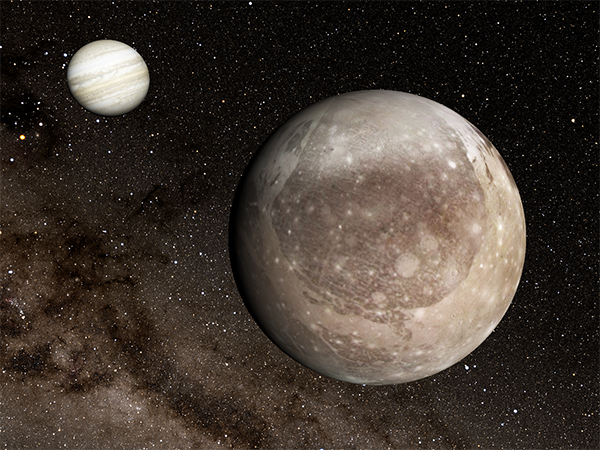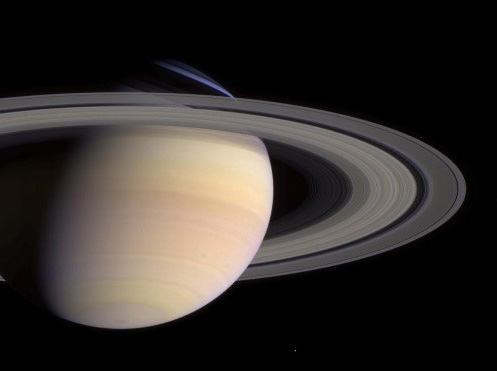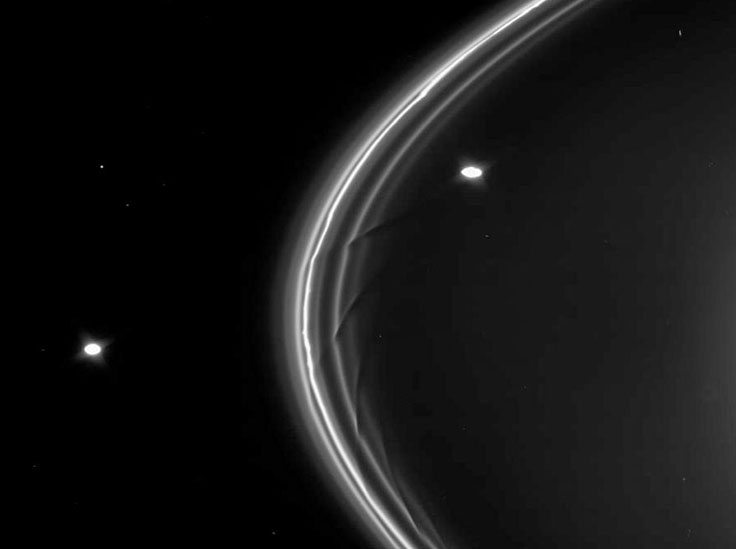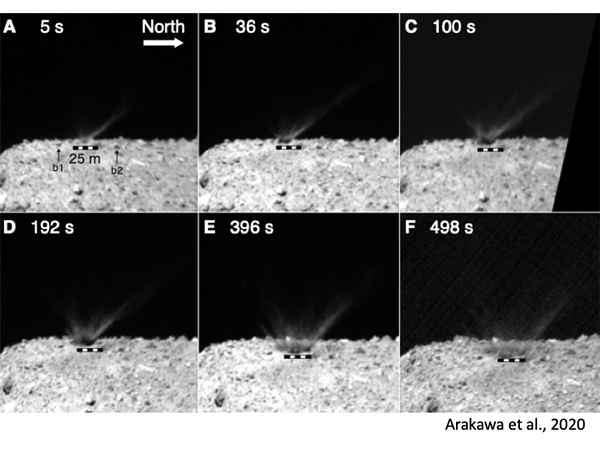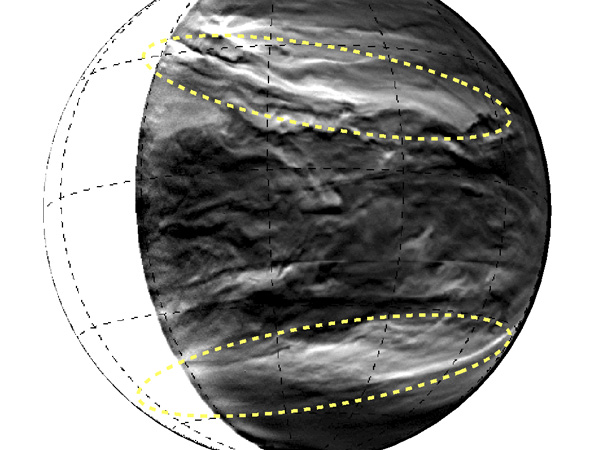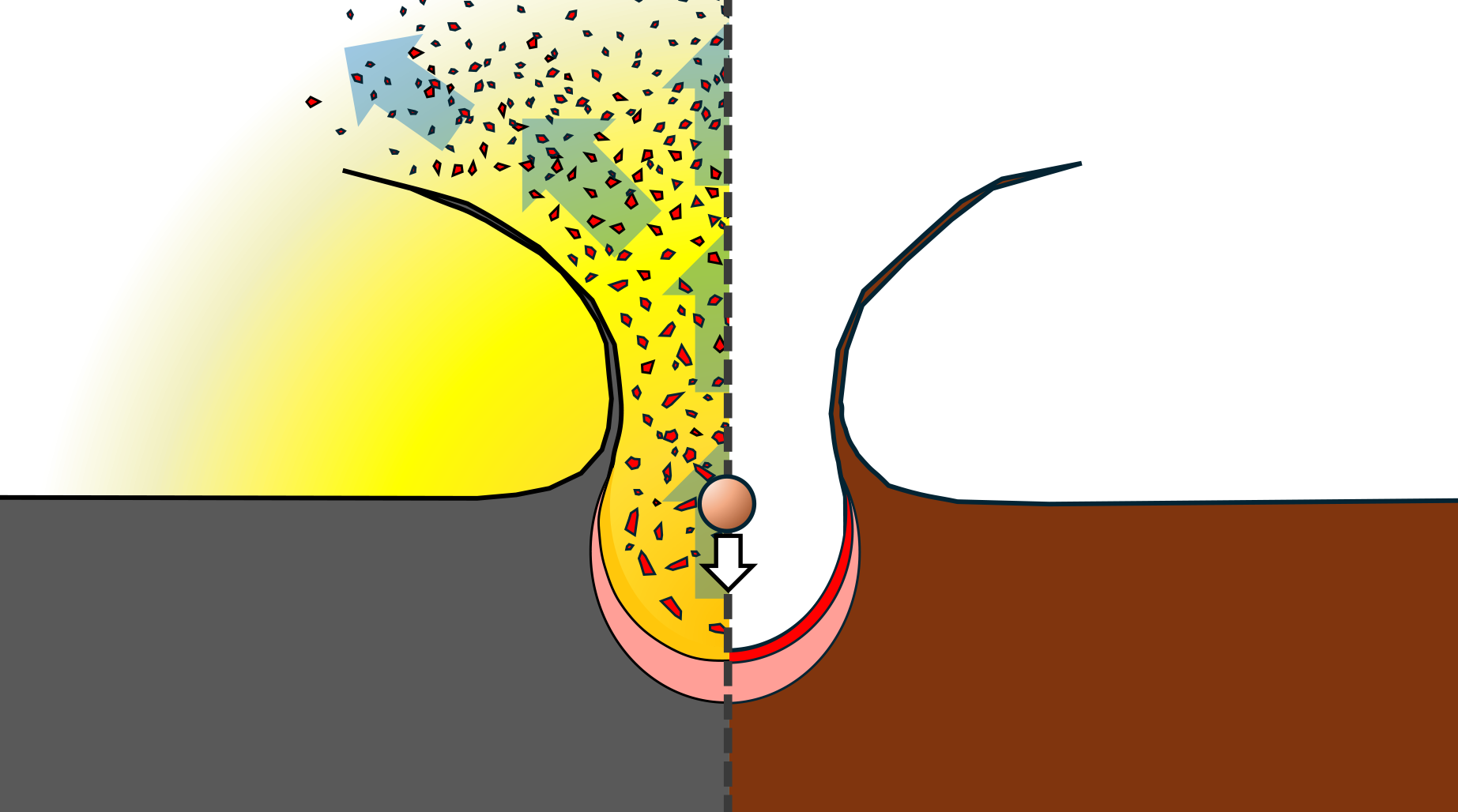A team of researchers has clarified the origin of the rings recently discovered around two minor planets known as centaurs, and their results suggest the existence of rings around other centaurs. These findings were published on August 29 in Astrophysical Journal Letters, and introduced in AAS Nova, a website for research highlights from the journals of the American Astronomical Society.
The lead author of the paper is HYODO Ryuki (Kobe University Department of Planetology, Graduate School of Science), and co-authors are Professor Sébastien Charnoz (Institute de Physique du Globe/Université Paris Diderot), Project Associate Professor GENDA Hidenori (Earth-Life Science Institute, Tokyo Institute of Technology), and Professor OHTSUKI Keiji (Kobe University Department of Planetology, Graduate School of Science).
Centaurs are minor planets that orbit between Jupiter and Neptune, their current or past orbits crossing those of the giant planets. It is estimated that there are around 44,000 centaurs with diameters larger than one kilometer.
Until recently it was thought that the four giants such as Saturn and Jupiter were the only ringed celestial bodies within our solar system. However, in 2014 observations of stellar occultation (an event that occurs when light from a star is blocked from the observer by a celestial body) by multiple telescopes revealed that rings exist around the centaur Chariklo (see Figure 1). Soon after this, scientists discovered that rings likely exist around another centaur, Chiron, but the origin of the rings around these minor planets remained a mystery.
The team began by estimating the probability that these centaurs passed close enough to the giant planets to be destroyed by their tidal pull. Their results showed that approximately 10% of centaurs would experience that level of close encounter. Next, they used computer simulations to investigate the disruption caused by tidal pull when the centaurs passed close by the giant planets. The outcome of such encounters was found to vary depending on parameters such as the initial spin of the passing centaur, the size of its core, and the distance of its closest approach to a giant planet (Figure 2). They found that if the passing centaur is differentiated and has a silicate core covered by an icy mantle, fragments of the partially-destroyed centaur will often spread out around the largest remnant body in a disc shape, from which rings are expected to form.
The results of their simulations suggest that the existence of rings around centaurs would be much more common than previously thought. It is highly likely that other centaurs with rings and/or small moons exist, awaiting discovery by future observations.

(left) Visualization of Chariklo and its rings, provided by the European Southern Observatory (http://www.eso.org/public/images/eso1410b/). Credit: ESO/L. Calçada/M. Kornmesser/Nick Risinger (skysurvey.org).
(right) Visualization of the rings as seen from Chariklo’s surface, provided by the European Southern Observatory (https://www.eso.org/public/images/eso1410a/). Credit: ESO/L. Calçada/Nick Risinger (skysurvey.org).
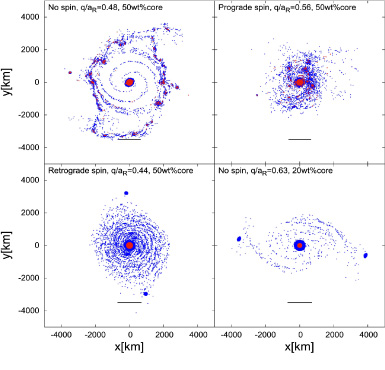
The center of each panel shows a centaur after being partially destroyed, and the fragments around it distributed in a disc shape, from which observed rings are expected to form (from Hyodo et al. 2016, Astrophysical Journal Letter 828, L8)
Technical terms
- 1. Centaur
- small celestial bodies that orbit between Jupiter and Neptune. Their current or past orbits repeatedly cross those of the giant planets, and sometimes pass very close by the giant planets themselves.
- 2. Chariklo
- a centaur with a radius of approximately 250 kilometres. In 2014 it was clarified by stellar occultations that this centaur has rings.
- 3. Chiron
- a centaur with a radius of approximately 220 kilometres. Like Chariklo, it is thought to possess rings based on data from multiple observations.
Journal information
- Title
- “ Formation of Centaurs' Rings through Their Partial Tidal Disruption during Planetary Encounters ”
- DOI
- 10.3847/2041-8205/828/1/L8
- Authors
- Ryuki Hyodo, Sébastien Charnoz, Hidenori Genda, Keiji Ohtsuki
- Journal
- Astrophysical Journal Letters





